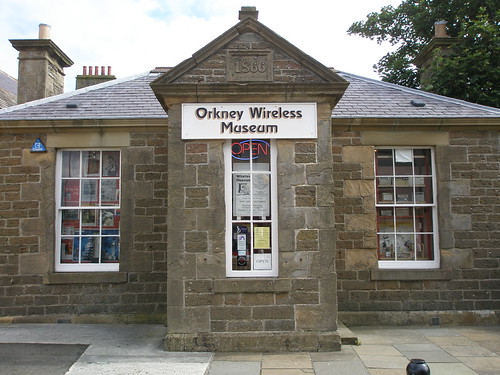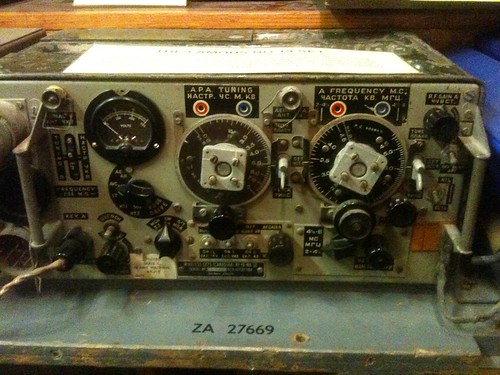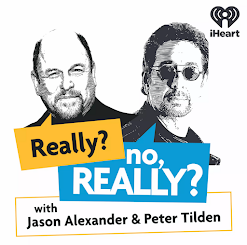 |
| Orkney Wireless Museum, Kiln Corner, Kirkwall, Orkney - photo taken by Flickr user "I like" |

Orkney Wireless Museum, a set on Flickr.
The museum is PACKED full of wireless equipment including early crystal radio sets from the 1920s when radio broadcasts began in the UK. It's nicely organised with a flow from the basic sets, through thermionic valves, diodes etc, along with changes in the way people listened to their sets. Early sets weren't powered so headphones, or those gramophone horns were used but as power increased there was enough oomph to drive speakers. There are also displays looking at the military use of wireless communications.
During the Orkney International Science Festival the volunteers who run the festival do live demos of amateur radio ("CQ...CQ"). The chirruping of the radio equipment as it was switched on and tuned made a lovely sound (if you like radiophonic workshop types of sounds). While I was there they managed to contact someone in Belgium (fairly good signal) and Italy (poorer signal, but the guy in Italy had a fairly low powered transmitter). Having never heard these communications before I was quite surprised how they slip between formal (calling to see if anyone's listening, introducing your callsign, all with the Echo Bravo Tango business, repeating the callsign of the other person) and into informal chit chat. I assumed that every single syllable would have to be very precisely pronounced but even though the communications weren't perfectly clear I didn't expect to be able to understand so much of what was said - our ears must be pretty good at tuning in to the signal!
I also unwittingly discovered that one of their demonstration speakers was still on - while my iPhone was doing its handshake with the groundstation / trying to find a signal (I've not seen any 3G signal while here, only the O symbol which is frankly useless, hotel wifi for the win) one of the speakers started making that interference trilling sound when someone sticks a mobile on top of a speaker. While I waved my phone near various speakers we worked out which one was still switched on ;)
If you've ever wondered why the ends of the great big valves are silvered (I have), I found an answer from someone working there. The valves look awfully like light bulbs and were often made by the same companies - the technology's not that different in terms of evacuated glass tubes. The silver didn't appear to be conductive (it didn't seem to be connected to anything) so I couldn't really work out what it was doing and wondered if it might just be aesthetic, but no. It's apparently used as a 'getter' to clear out the last bit of air/ gas in the glass and, on being heated, leaves a silver deposit on the inside of the glass.
Pictures of museums just show you what's in there but they can't really convey the comfy warmth of a room full of lovely handcrafted brown things (wood!) and the sounds of tuneable radios.
Other Orkney 2012 posts
- Orkney Wireless Museum - this post
- Skara Brae, Ring of Brodgar, Stenness - coach trip to see the neolithic site
- Orkney International Science Festival - a couple of events and a lovely old cinema projector
- Getting to Orkney - by sleeper train, coach and ferry





No comments:
Post a Comment
Comment policy: I enthusiastically welcome corrections and I entertain polite disagreement ;) Because of the nature of this blog it attracts a LOT - 5 a day at the moment - of spam comments (I write about spam practices,misleading marketing and unevidenced quackery) and so I'm more likely to post a pasted version of your comment, removing any hyperlinks.
Comments written in ALL CAPS LOCK will be deleted and I won't publish any pro-homeopathy comments, that ship has sailed I'm afraid (it's nonsense).